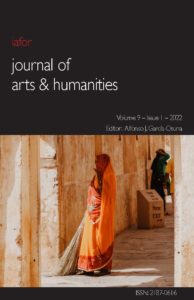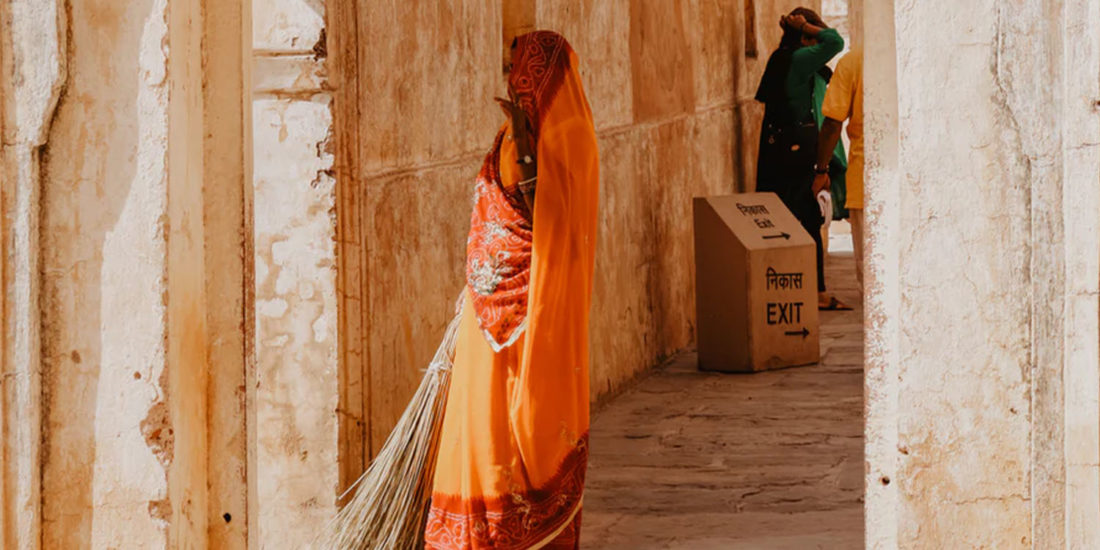Welcome to the IAFOR Journal of Arts & Humanities – Volume 9 – Issue 1
 Most of the authors that have contributed to this issue demonstrate a grounding on a critical model whose imprint on the major areas of humanist analysis is uncontested: feminist theory. Thus, several articles may seem to present similar types of argument by foregrounding the victimisation of women in patriarchal society, but the diversity of cultural environments analysed makes for a variegated panoply of investigative prospects.
Most of the authors that have contributed to this issue demonstrate a grounding on a critical model whose imprint on the major areas of humanist analysis is uncontested: feminist theory. Thus, several articles may seem to present similar types of argument by foregrounding the victimisation of women in patriarchal society, but the diversity of cultural environments analysed makes for a variegated panoply of investigative prospects.
In “Reading Mom Lit: Feminism, Postfeminism and the Maternal Dilemma”, Srijanee Roy looks at a genre of popular paperbacks, written by and about would-be or new mothers, called mom lit. The paper analyses issues that include the debate regarding the performance capabilities of working mothers, the influence of self-help books in structuring the mother’s consciousness, the cycle of trying to balance work and children, “time-debt” and its attendant feelings of guilt, the psycho-somatic disorders that correspond to motherhood, and the social hindrances attending single parenting and “unconventional” motherhood that in so many ways victimise women. A study is undertaken of three iconic mom lit novels and the multiplicity of concerns that are voiced by these mothers, from psycho-somatic disruptions to post-pregnancy socialization issues.
https://doi.org/10.22492/ijah.9.1.01
In “Becoming a Man: Construction of the Somali Raganimo in Maps”, Sehnaz Rofique Saikia argues that the social aspect of gender is of pivotal concern, and it needs to be examined not only from a feminist perspective but from masculinity studies as well. As it is men who wield power in society, it is crucial to understand the implications of gender-based expectations on men who possess that privilege.
https://doi.org/10.22492/ijah.9.1.02
In “Reimagining Witches in Contemporary Hindi Cinema: A Study of ‘Bulbbul’ and ‘Roohi’”, Riya Mukherjee and Suraj Gunwant study two films that subvert the conventional genesis of witches and witch-hunts, arguing that in the process of undermining superstitious belief, these films situate witches as embodiment of an emancipatory discourse that resists the silencing of women, a practise that still serves the patriarchal standards of a heteronormative, bourgeois society.
https://doi.org/10.22492/ijah.9.1.03
In “Gender Roles and Perceptions: The Refugee Experience and Political Agency in Susan Abulhawa’s The Blue Between Sky and Water and Against the Loveless World”, Farhan Ahmad analyses the gendered impact of the ongoing conflict between Israel and Palestine. Conflict victimises women in many specific ways, so the paper aims to offer an insight into the experiences of women during the conflict and beyond, highlighting their loss of dignity and independence and indicating how they grapple with all these issues. The study explores the ways in which Palestinian women are beleaguered by the incessant political power struggles that have fashioned their social environment, shaping their mindsets in their unending conflict with the patriarchy.
https://doi.org/10.22492/ijah.9.1.04
In “Dangerous Femininity: Looking into the portrayal of Daphne Monet as a femme fatale in Walter Mosley’s Devil in a Blue Dress”, Prerana Chakravarty analyses novelist Walter Mosley’s treatment of the femme fatale figure. Through the character Daphne, a woman that has been sexually assaulted by her own father and does not allow herself to be controlled by men, the author offers an analysis of the figure of the femme fatale in its function as catalyst for men’s behaviour and examines how the femme fatale was created. The femme fatale is an archetype for the transgressing woman, who threatens men with identity erasure and causes outcomes that often lead to their downfall.
https://doi.org/10.22492/ijah.9.1.05
In “Can the “Mutelated” Subaltern be Free? Reading Friday’s Subversion in J. M. Coetzee’s Foe”, Hemangi Bhagwat and Tanya D’souza study J. M. Coetzee’s 1986 novel Foe, which tells the story of Susan Barton, a woman that has boarded a ship bound for Lisbon in her search for her kidnapped daughter. After a mutiny on the ship she is set adrift, washing ashore on the island inhabited by “Cruso” and Friday and intruding into their ongoing adventure. Her account is then inserted into the original Robinson Crusoe story line, which is redrawn following Susan Barton’s perspective. There is a critical emphasis on the character Friday, Cruso’s slave, analysing his subversive subalternity in an attempt to hear and understand his silences and his non-verbal modes of performing freedom.
https://doi.org/10.22492/ijah.9.1.06
Shlomy Mualem moves in a different direction in “Literary Writing and Personal Identity in Borges and Pessoa”, wherein the author argues that Borges and Pessoa—perhaps two of the greatest writers of the twentieth century—conceive the interplay between writing and self-identity in rather complex fashion. Pessoa’s term “heteronym” relates to the way in which an author’s subjectivity abruptly gives way to an idiosyncratic identity who composes the poem. This recalls the Kabbalistic idea of God’s contraction (tzimzum), the creator preserving his or her passive self-identity while giving birth to other beings from his or her inner void. Discussing Shakespeare and Whitman, Borges proposes that the act of writing is a form of self-creation in which the writer begets a unique narrative identity out of himself or herself that, transfigured, is simultaneously both the same and the other.
https://doi.org/10.22492/ijah.9.1.07
A. Shifana, in “The incompetent antagonism of wit: A study of Hamlet and Catch-22”, argues that wit is unique, as it can appear complex and banal at the same time. In studying these two great exemplars of English-language literature, the author states that, despite the complexity of the device, wit only offers a momentary chuckle or clarification of events, easily forgotten in a larger context. This dichotomy of wit operates in the plot and theme in these two as well as in many other literary texts.
https://doi.org/10.22492/ijah.9.1.08
In “The Islamic Other in post-9/11 America: Reading Resistance in Hamid and Halaby”, Pathik Roy engages with the politics of the emergence of a discursively constructed “Islamic Other” in the post-9/11 national imaginary. Using the Foucauldian ideas of Power/Knowledge and “regime of Truth” along with Said’s major premises as are found in the works Orientalism and Covering Islam, the paper attempts to debunk the idea that “innocent”, neutral and objective representations in western, especially US media have been the norm.
https://doi.org/10.22492/ijah.9.1.09
In “The Beasts and the Beastly: Colonial Discourse and the (Non-)Human Animals of Pantisocracy”, Monirul Islam studies Coleridge and Southey’s plan (1794) to set up a utopian community on the banks of the Susquehanna River in Pennsylvania; the proposed society was christened Pantisocracy. The study focuses on the root causes of the project’s failure. The differences between Coleridge and Southey regarding the place of servants in Pantisocracy and an uncertainty over the role of women in the community have often been cited as the key issues that led to the failure of the project. However, a close attention to Coleridge and Southey’s writings on Pantisocracy reveals that a third reason for the abandonment was the anxiety of the two poets over the non-human animals and native humans of America.
https://doi.org/10.22492/ijah.9.1.10
Jytte Holmqvist, in “Fellini in Memoriam – The Absurdist Elements of Fellini’s Cinema as a Reflection of our Disrupted COVID-19 Reality”, undertakes a comprehensive comparison between the bold and absurdist cinema of the Post-Neorealist filmmaker and today’s also strange and perplexing social environment. Contextualising his cinema within an auteurist framework, the work highlights how ground-breaking Fellini was in embracing the unconventional; by doing so he provided a practical guide for navigating contemporary reality.
https://doi.org/10.22492/ijah.9.1.11
We trust that the contents of this issue will be of interest to a diverse audience.
Dr Alfonso J. García-Osuna
Editor

